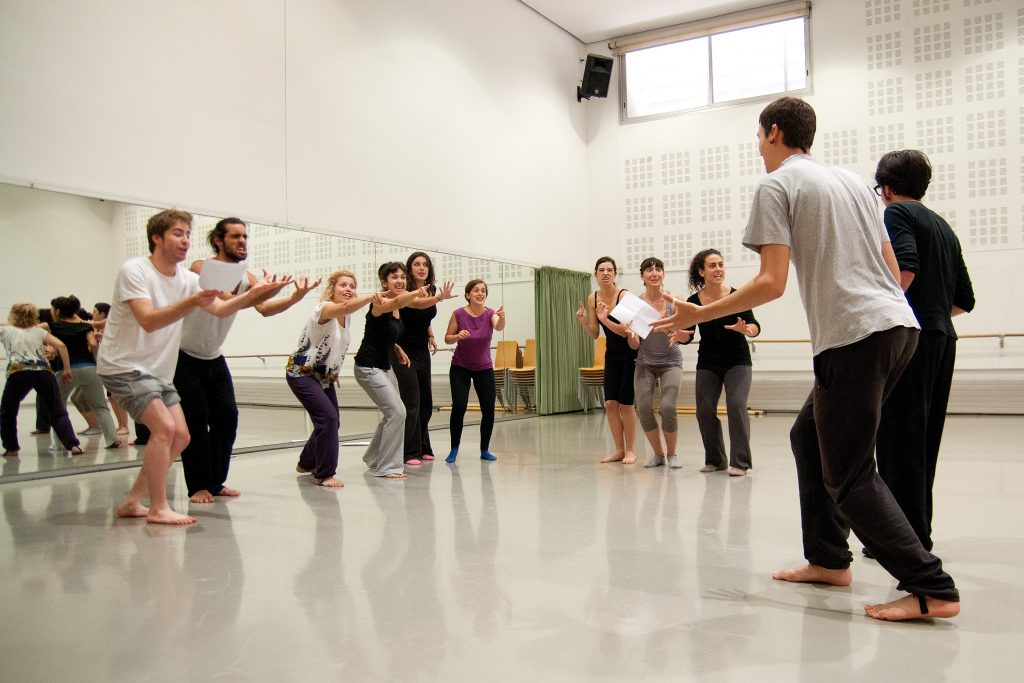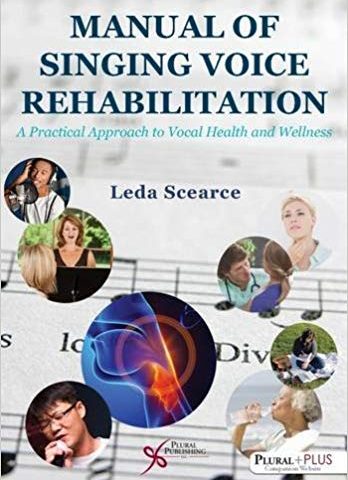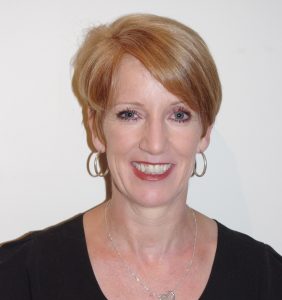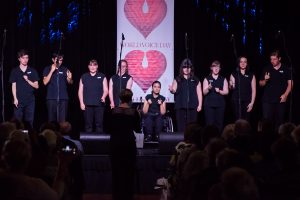Lifetime Achievement Award for “Outstanding leadership and sustained contribution to the field of voice over many years”
The highest honour accorded by the Association
- Open to AVA members or retired previous members only
- Nominees shall have evidence of significant contribution in at least three of the following areas:
- Exemplary practice within their profession
- Education
- Commitment to cross-disciplinary activities
- Research and publications
- Promotion of voice and/or advocacy for vocal health
- Service to AVA
- Service to the voice community
- Nomination received unanimous support from Board
- Entitles the awardee to Life membership of AVA
As presented by Dr Debbie Phyland at the Australian Voice Association AGM, October 25th 2020:
“To introduce and contextualise the two wonderful ensuing recipients of this award necessitates a reflection on the inception of AVA and their pivotal roles. Back in Adelaide some 30 years ago, Cecilia Pemberton, Janet Baker, Alison Russell, David Close and Alison Bagnall met up and deigned to hold a multi-disciplinary voice conference, the first of its kind in Australia. As a committee they were impecunious, but their US keynote presenter Professor Bastian generously agreed to present with no remuneration and they proceeded in good faith. The Inaugural Voice Symposium was held in Adelaide in May 1991 at the Queen Elizabeth Hospital. Two hundred delegates attended the symposium; speech pathologists, ENTs, teachers of singing and voice coaches. The success of the symposium was the impetus for the formation of the AVA.
By the end of 1991, Alison Russell, Jan Baker and Cecilia Pemberton had established the AVA with a charter to foster collaboration between all voice professionals in the education, research and care of voice users.
The financial success of the inaugural symposium meant that, from then on, seeding funds were available for future AVA organising committees.
All three of these women should be congratulated for their vision and commitment to Voice in Australia but in particular today we wish to recognise the two that have sustained this commitment and been true doyennes in our collective worlds for the past 30 years. In case you haven’t been able to identify them from this introduction, they are none other than Dr Janet Baker and Cecilia Pemberton. In their own different ways, they have both been pioneers and pundits. It is fitting that we celebrate them together, but this does not in any way diminish the extraordinary relative contribution of each. So, in alphabetic order:
Associate Professor Janet Baker
Dr Baker (Jan) is an inspirational thought leader in our field, and an exceptional role model to me and so many others. I personally recall attending a therapy workshop she ran about 28 years ago and feeling like I had an epiphany as I had met my new idol. Witnessing her work with clients and hearing of the strong physiological and psychodynamic rationales underpinning her therapy represented a pivotal and inspirational moment in my own journey as a voice clinician. I know I wrote a letter to her then (which now may seem obsequious) but my words of gratitude and admiration still ring true today and would be echoed by many others.
From the beginning of her speech pathology career, Jan has been fascinated by the intrinsic links between communication, human behaviour and emotion and she has championed the importance of recognising and exploring these connections, especially in relation to the human voice. Her further studies which led to qualifications in counselling and psychotherapy and family therapy, demonstrated in practice, her commitment to dealing with communication issues and their impact in the wider framework of family; beyond the individual. Further, her impactful PhD research reflected her passion and commitment to the area of voice. Dr Baker was the first speech pathologist to qualify as a clinical member of the International Transactional Analysis Association (ITAA) and as a Family Therapist.
As previously noted, Dr Baker was one of the founding members of the Australian Voice Association and has played a pivotal role in this association for many years. Indeed, she has also been well recognised in SPAA for her service and advocacy for voice as part of communication. She has been a regular invited presenter at AVA & voice events, made significant contributions in the areas of speech pathology clinical services, academic education, influence and advice to government, clinical education, research and publications, management of health and education services and service to the community. She has been heavily involved with tertiary education throughout, setting up the curriculum for the new Speech Pathology course at the School of Communication Disorders at Sturt College of Advanced Education in Adelaide and later in her career from 2004-2006 she worked in curriculum planning for the Speech Pathology Masters’ Program at the School of Medicine, Flinders University, SA and was appointed as Associate Professor Speech Pathology and Audiology.
Dr Baker was similarly recognised by Speech Pathology Australia with transfer to the highest accolade with Life Membership and she has also received prestigious recognition in the US receiving the American Psychosomatic Society (APS) Scholar’s award and Citation Poster Award in Denver 2006. We know she has received numerous other awards. She is well known and respected internationally and nationally throughout the speech pathology, laryngology, performing arts medicine, psychology and voice fields. She has presented in her inimitable, poised, erudite and inspiring manner for an impressive number of invited national and international presentations and workshops-the invitations testament that she is indeed considered most worthy by her peers.
She is similarly very well published. Most significantly, Assoc Prof Baker has authored the truly extraordinary book “Psychosocial Perspectives on the Management of Voice Disorders” (a work of art as well as science). She has also written a chapter on “Functional Voice and Related Disorders” in the excellent textbook Functional Disorders in Neurology Handbook of Neurology Series and is Lead Author (along with other international notables) on a multi-disciplinary consensus document for Management of Functional Communication, Swallowing, Cough and Related Disorders: Consensus Recommendation for Speech and Language Professionals.
Perhaps many don’t know that Jan is also a highly acclaimed mezzo-soprano with a long list of performance and stage credits. (I recall first hearing Jan’s magnificent voice when she performed at The National Gallery of Victoria for the 1998 AVA Voice Conference with her witty reworded version of Gilbert & Sullivan’s Major General “I am the very model of an otolaryngologist”). Being an operatic performer herself, has no doubt further informed her intricate understanding of the performance voice, its strengths and fragilities and symbiotic relationship to one’s physical and psychological wellbeing.
So… there are so many things I could say about Jan (Associate Professor Janet Baker). Her sheer hard work, creativity, multiple gifts and extraordinary achievements represent outstanding involvement and service to AVA over three decades and indeed merit this award and more.
———————————————————–
Cecilia Pemberton
Equally but for different reasons, Cecilia Pemberton is similarly one of my, and so many others, cherished mentors and sources of clinical inspirations-a passionate speech pathologist who is a clinician to the core and has made a sustained and outstanding contribution to the speech pathology profession during her career. She is a recognised and valued specialist in the assessment and treatment of clients with any form of vocal dysfunction across the board and has worked for the last 43 years in Victoria, New South Wales and South Australia and in the United Kingdom-she gets around our Cecilia! Colleagues at both a state and a national level frequently seek her opinion and advice about client care. She is well recognised for her expertise and clinical judgement. She has also been involved in formal research in her specialty area and had her work published in international professional and scientific journals. Other researchers in the field of voice refer to her depth and breadth of knowledge in clinical expertise which is always grounded firmly in evidence-based research.
Cecilia has been an active promoter of clinical excellence and research. She has been involved in a number of formal research projects, all of which have resulted in ground-breaking publications in international refereed journals. In particular three publications she co-authored have been well-cited and received much media interest “Have Women’s Voices Lowered Across Time?” and also “A Cross Sectional Study of Australian Women’s voices; Speaking Fundamental Frequency Changes Over Time in Women: A Longitudinal Study; and “Characteristics of Normal Larynges under Flexible Fibrescopic and Stroboscopic Examination: An Australian Perspective” . All of these articles have in fact had a significant impact on our understanding of the Australian voice landscape.
In 2000, Cecilia who is here tonight led a research project evaluating the Voice Care for Teachers DVD. The DVD was an update of the educational video (created by Cecilia, Dr Alison Russell and Professor Jenni Oates) and has been sold widely to educational institutions, speech pathologists and voice coaches throughout Australia and overseas. The specific focus on prevention and early intervention for voice problems was pioneering and has been the impetus for many other proactive approaches to occupational vocal health.
Cecilia has continued her commitment to this cause by investigating the prevalence of voice problems among teachers and developing long-term vocal health programs particularly targeting Catholic Schools in NSW. The first of her programmes started in 2008 with Wollongong Catholic Schools and was based on the concept of Employee Assistance programmes which had a long history of success. The results have significant implications for the prevention of voice problems in teachers and have been widely disseminated and recognised at OH&S conferences and influenced/guided Work Cover voice policies and recommendations. She has similarly provided voice care programs to the fitness industry. Her private practice is aptly named “Voice Care Australia”. Cecilia has also been engaged as a voice consultant by Occupational Health Solutions to provide independent medical assessments for workers compensation cases presenting with voice disorders.
Indeed, Cecilia’s work in the occupational health space has been ground-breaking and recognised on the international stage earning her the British Voice Association’s Van Lawrence Best Paper prize; the Speech Pathology Australia Community Based Innovation award and finalist position for the Australian Human Resources Institute Awards, the BMA Best Workplace Health & AMP Wellbeing Program, and NSW Workcover Awards.
Cecilia has been a regular invited speaker at conferences and workshops both nationally and internationally. She has been instrumental in setting up, maintaining and leading Voice Interest groups whichever state she has been in (SA, Victoria & NSW), showing boundless generosity in sharing her knowledge and experience among her colleagues. She has been an active teacher and clinical educator of both students (including those at Flinders University, SA) and speech pathologists alike showing a tireless commitment to collegiality and lifelong learning.
Cecilia arrived in Australia from the United Kingdom in 1977 and has worked in the field of head and neck oncology and voice disorders ever since. She has been involved in, and frequently the development of, joint clinics in Melbourne, Adelaide and Sydney for 43 years: evidence of her truly collaborative approach. She is committed to, and models, best practice in the area of voice. Her passion for her role as a speech pathologist, her excellent networking skills, her innovation and significant contribution to the field of voice through the development and implementation of therapy programs, outcome measures and prevention programs, together with her willingness to share information with her colleagues make her a perfect candidate for the award today and second to none.
———————————————————————————————–
On a personal note, I am exceptionally honoured to present these awards tonight and to have been mentored by both of these extraordinary and truly inspirational women in different ways. I wish to also take this opportunity to thank them for their invaluable contribution to my own professional growth (even if I neglected to send Cecilia a similar letter to Jan’s one!).
On behalf of not just speech pathology but the entire Australian Voice community, we congratulate you Jan and Cecilia on your Lifetime Achievement Awards (as Life Members of AVA) and thanks you both unreservedly for your “Outstanding leadership and sustained contribution to the field of voice over many years”. The Australian Voice Association also thank you for your vision and commitment in setting up this organisation which remains so strong and important to us all nearly 30 years later.”
Dr Debbie Phyland, October 25th 2020







 What is Vocal Massage and could it be helpful for patients with Voice Disorders?
What is Vocal Massage and could it be helpful for patients with Voice Disorders?
 The Australian Voice Association
The Australian Voice Association
 Healing Voices
Healing Voices

